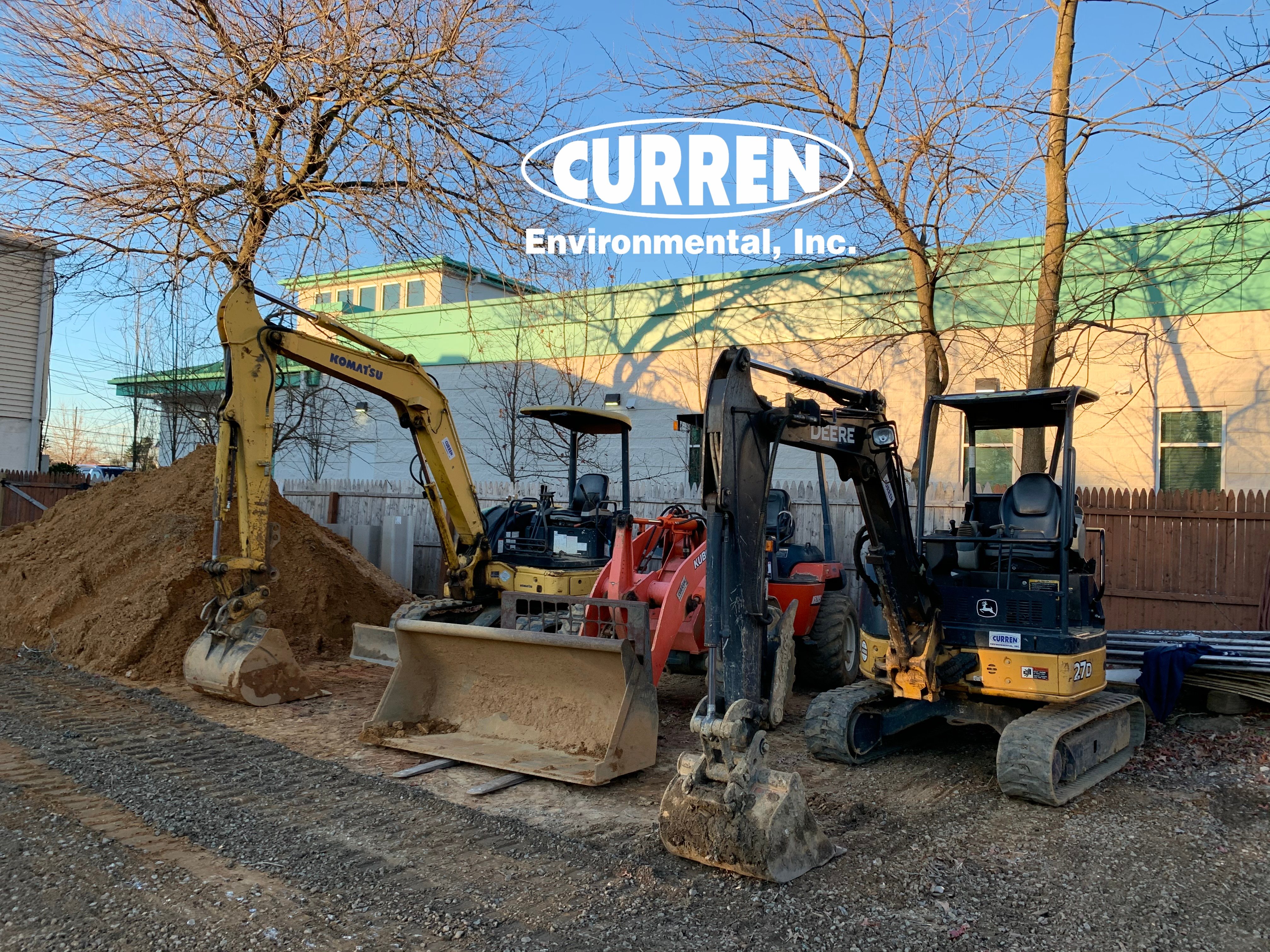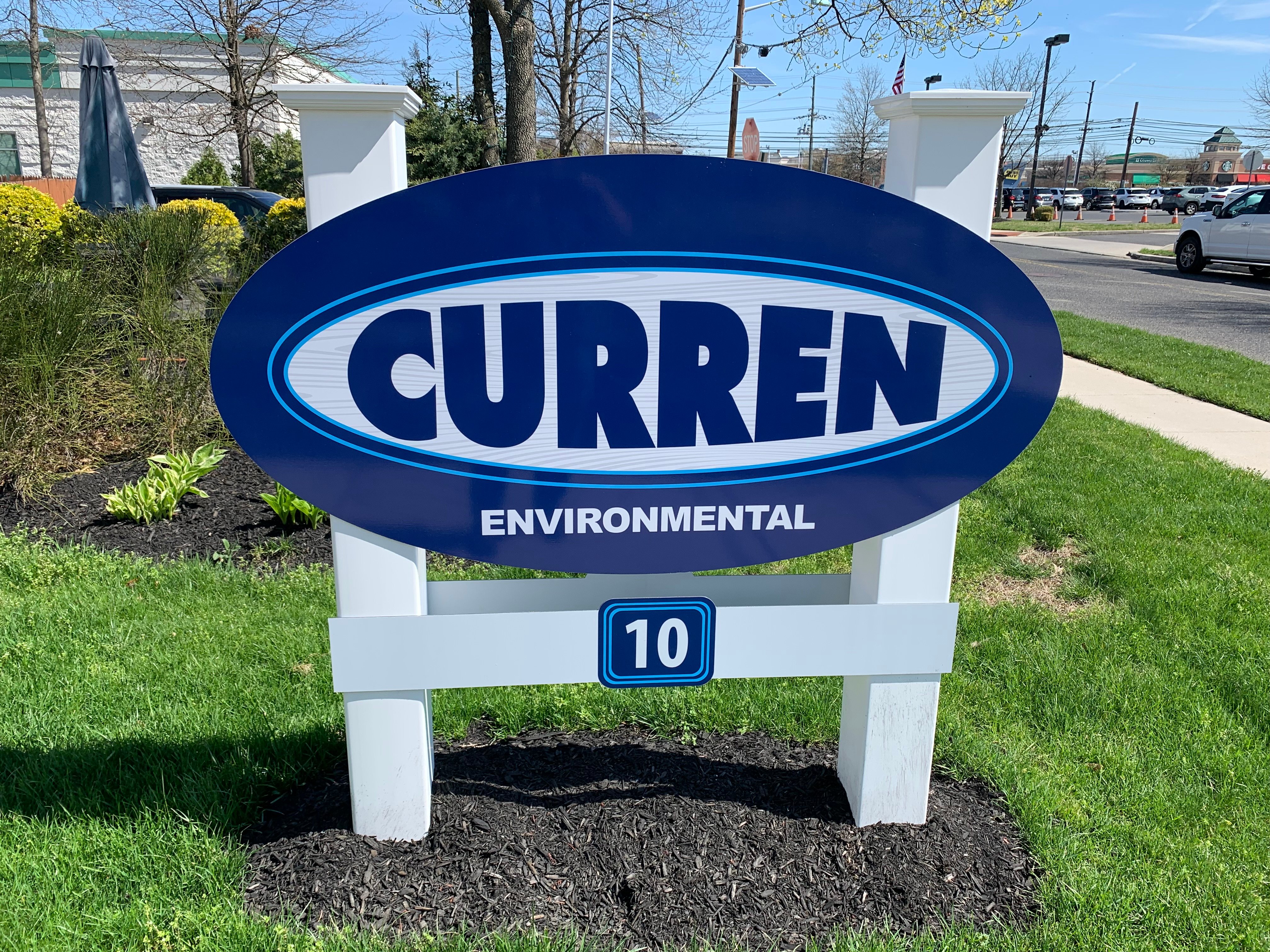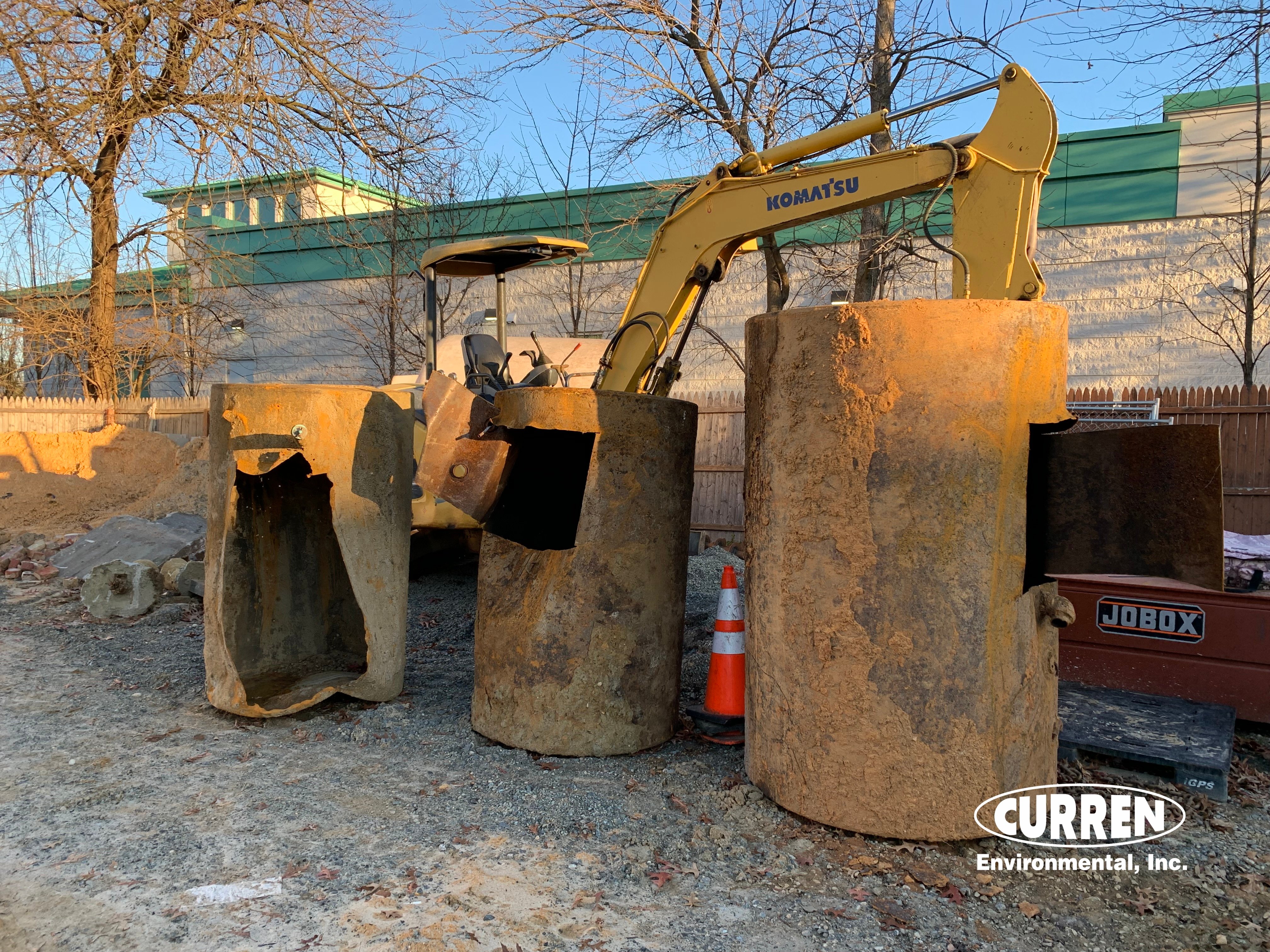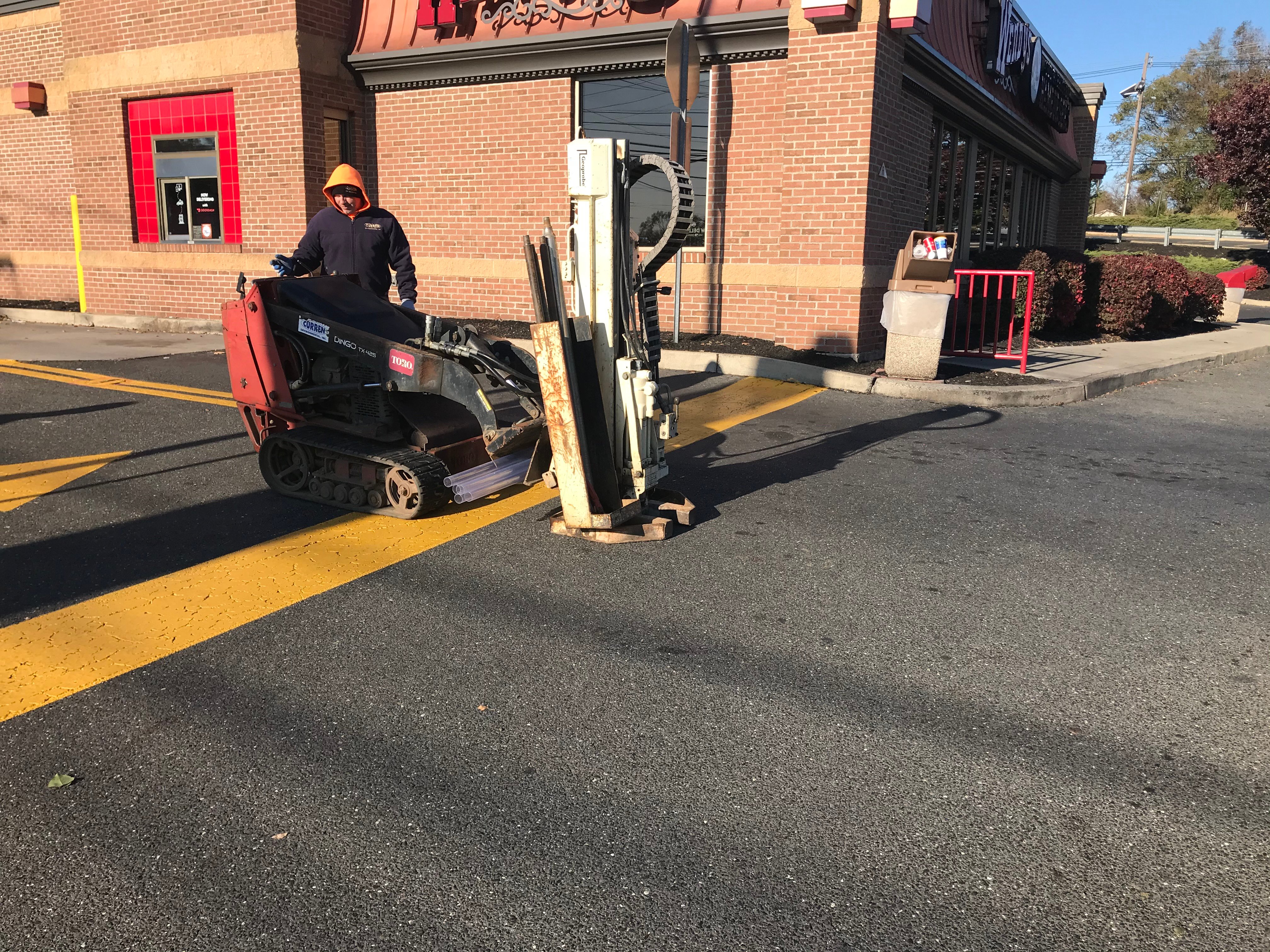What Does
A Phase I Environmental Site Assessment Include?
A Phase I is 100% research and expert walking inspection of the property and all data obtained for the property. Zero testing is completed in a Phase I, testing is Phase II.
Simple put a Phase I can help find an environmental problem before you purchase a property. The historical map below is but one of many we review when performing a Phase I and depending on which property you are buying in the map, we count over 15 areas where contamination could exist. This map shows that the property being purchased was an automotive garage with buried gasoline tanks.
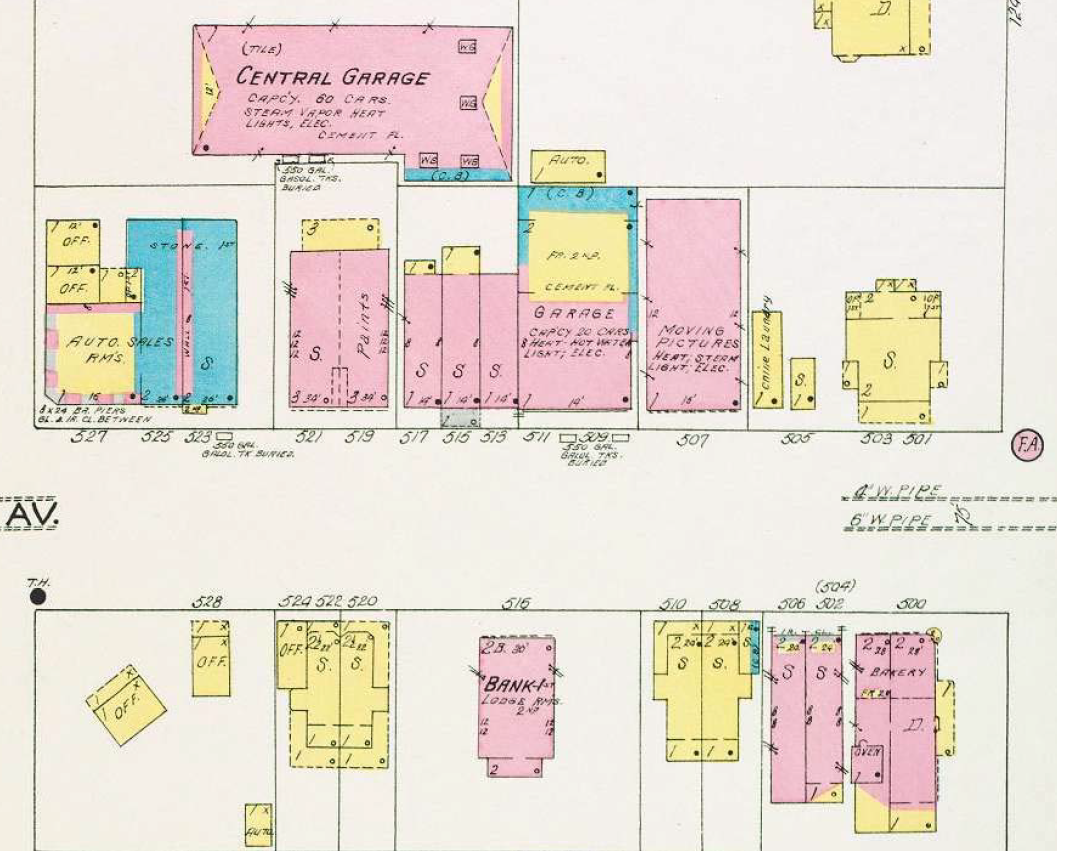
A Phase I ESA allows a purchaser of a property to perform due diligence for environmental issues prior to taking ownership. The Phase I is important because environmental regulations place the burden of cleanup on the property owner, not necessarily the polluter.
The Phase I for all practical purposes can save more money than shopping interest rates as a Phase I can find that $$$$$$$ eating environmental problems BEFORE you overpay for the property. Quick example a mechanic was expanding and wanted to buy the adjacent and friendly mechanic building next door, the seller was retiring. The sale was going to be financed by the seller. Buyer's attorney recommended a Phase I, which a typical bank would require. Seller spent $64,000 to cleanup the issues the Phase I found.
The meat and potatoes of a Phase I is the historical evaluation of the property which can extend back in time over 100 years. As a buyer you likely have a handle on what current operations are, but what happened at the site in the 1920's? Do you know what pollution was called before the EPA was formed in 1972? Pollution was called legal; it was how things were done. Today when that contamination is discovered it's a problem for the property owner.
Photo on the left had solvents leak that required remediation. Photo to the right is a vandalized transformer (vandalized for copper), that leaked PCBs into the soil. $80,000 problems, found by the Phase I and confirmed by Phase II testing. Phase III was the $80,000 cleanup.


Feel free to read the entire page to learn more about Phase I environmental site assessments. We also have a Frequently Asked Questions page here
Call the Experts Monday to Friday EST
888-301-1050
Free Consultation
A Phase I Environmental Site Assessment (ESA) by Curren Environmental, Inc. (Curren) is meant to identify the potential for contamination of a site by hazardous or toxic materials and to identify other possible environmental constraints on the site. It is not meant to be a detailed, comprehensive investigation based on quantitative or qualitative analytical data. No environmental sampling and analysis will be performed under the normal Phase I scope of work. The form and content of this ESA I will follow the form and content as outlined in ASTM standard E 1527-21. The results of the Phase I ESA will be used to determine whether or not further study (such as a Phase II ESA) is warranted, based on the background information gathered and the results of the site inspection. To obtain and develop the information required for the Phase I ESA of the property in a timely and efficient manner, the following scope of work is proposed, subject to minor additions and deletions, as indicated by the availability, relevancy, and adequacy of the background information, and by best field judgment.
Task 1 ‑ Off Site Review
A. Identify the city, county and state where the site is located.
B. Obtain and review current Federal and State databases of suspected and confirmed contaminated sites within the zip code of the site, or within a minimum of one (1) mile, including the following:
1. NPL [Superfund], FINDS [EPA's Facility Index System], CERCLIS, RCRA, Open Dump Site listings, ERNS [Emergency Response Notification System], and the State Priority List, UST Facility Information, and Solid Waste Facility Information listings. State and local agencies will be contacted as necessary to determine if environmental monitoring or enforcement activities, investigations or claims are or have occurred on or near the site, and if industrial or wastewater discharges to surface waters occur near the site.
C. 1. Indicate other agencies contacted, the name of the person contacted, and the information obtained.
2. State the name and address of any listed facility found to be within one mile of the site. Based on the search, indicate the distance and direction from the site to these facilities.
Task 2 ‑ Past Uses of the Site and Surrounding Land
A. Review title information of the property (provided at Client's expense), and Sanborn Maps, if available, to obtain information on past uses of the property possibly pertaining to the storage, treatment or disposal of hazardous substances.


B. Interview the current owners, employees, neighbors, government officials etc., regarding present and previous uses of the property and surrounding area, to a reasonable extent. Indicate the name of the contact and information obtained.
C. Examine readily-available historical aerial photographs and/or maps for indications of historical uses of the property, and for any evidence of potential on-site contamination, such as dumping or land filling.
D. Investigate whether the site or surrounding land within a one (1) mile radius of the site is being or has been used for any of the following purposes:
1. Agricultural (may be indicative of pesticide or herbicide used).
2. Landfill.
3. Tank/drum/equipment storage.
4. Industrial/manufacturing facility (type).
5. Oil/gas exploration.
6. Chemical/petroleum or waste storage/processing/ injection wells.
7. Military installations.
8. Fill areas.
9. Quarries/sand and gravel extraction.
Speak to a Live Person
888-301-1050
E. Investigate whether there are or have been any storage tanks on the site and, where possible, what was stored in them. If possible, determine the age and the capacity of the tanks and whether a suspected release from the tanks has been reported. Determine if any existing tanks are in compliance with applicable tank laws and regulations.
Task 3 ‑ Present and Proposed Use of Property/Surrounding Land
A. Provide a Site Location Map of the area using a USGS Quadrangle Map with the site clearly identified.
B. Identify any land within one (1) mile of the site that is indicated or proposed as a permitted landfill, hazardous waste, or solid waste facility. If so, determine potential for environmental impact on the site.
C. Determine if there is evidence that water wells, in use or abandoned, exist on the property. Indicate if they are the primary source of drinking water. Specify the present and proposed method of supplying drinking water.
D. Determine the present or proposed method of sewage disposal, whether public or private. Determine if a septic system, abandoned or in use, exists on the site.
E.Provide a preliminary hydrogeological characterization of the site by reviewing soil survey maps, geological maps, topographical maps, flood plain maps and data, and any other pertinent data available for the property and it's vicinity.
Task 4 ‑ Walking Inspection of Property
A. A qualified Environmental Professional will conduct a walking inspection of the property in order to determine whether any of the following were discovered:
1. Discolored or disturbed soil areas.
2. Areas of sparse, sick or dead vegetation.
3. Drums or storage tanks (note type).
4. Discolored or polluted water; unusual or noxious odors.
5. Groundwater monitoring wells.
6. Floor drains.
7. Roads with no apparent outlet or purpose.
8. PCB containing transformers within structures or on power poles and lighting ballasts in older buildings. Other potential PCB containing material, such as soil near current or former railroad tracks.
9. Maintenance practices and hazardous materials handling procedures.
10. Any storage of significant quantities of potentially hazardous chemicals,
including herbicides and/or pesticides.
11. Potential use of lead-based paint.
12. Potential wetlands and flood plains.
B. Provide documenting photographs.
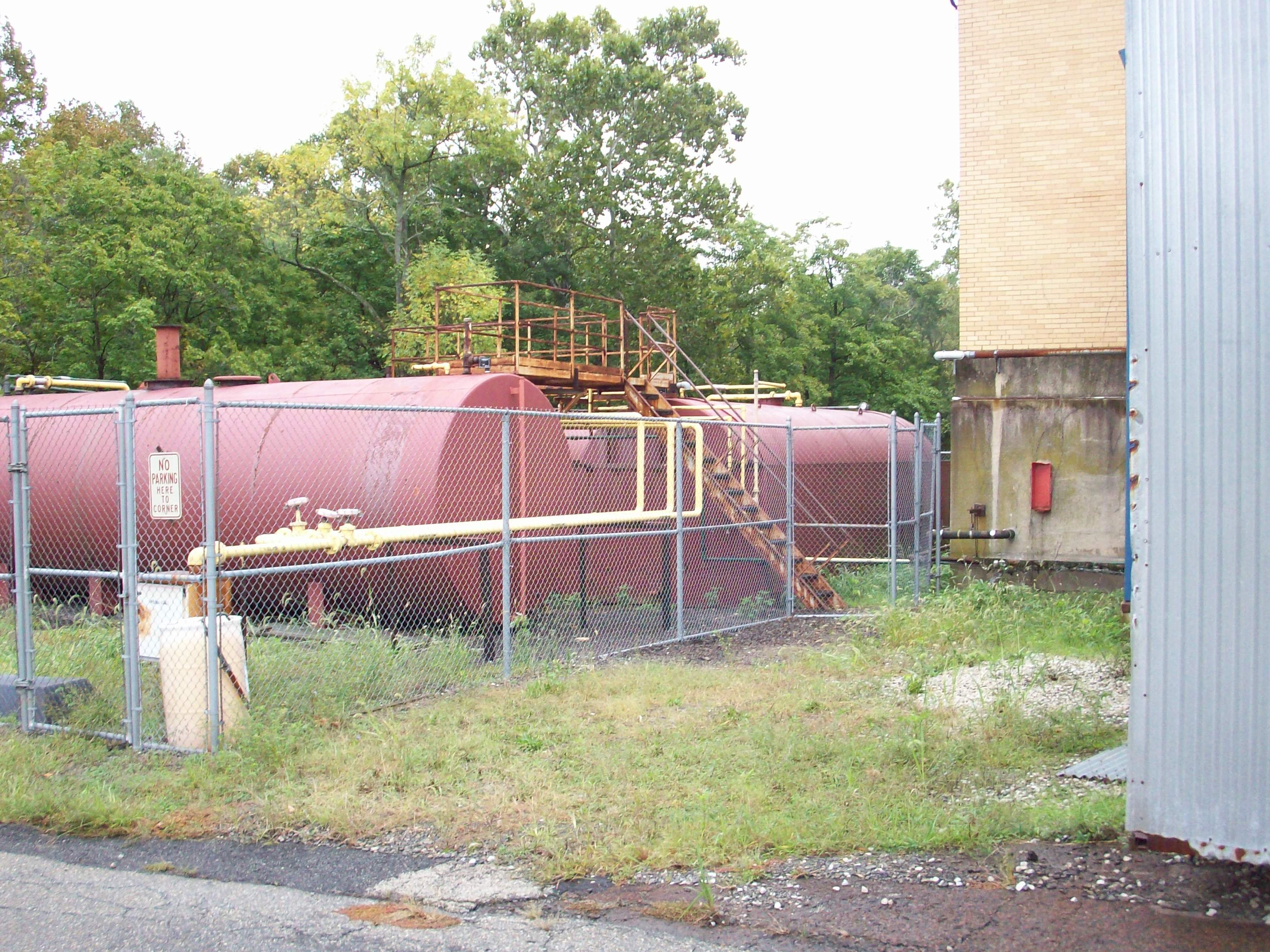
Task 5 ‑ Final Report
A. Review the data developed from the field reconnaissance, agency contacts and records for technical accuracy and corroboration. Analyze and assemble the data into a final report stating conclusions and recommendations either that no further study of the site be undertaken or that a Phase II Environmental Site Assessment be initiated.
B. Determine whether there are any unique environmental factors, observations, or aspects of the site history which would justify further investigations.
What is the average length of time to complete a Phase I?
1 Average time to complete is 2 to 3 weeks for most site but can be as long as 6 weeks if there are government files to obtain review. The delay is based on government access to files.
What can delay the Phase I Report?
All of the following are REQUIRED when completing a Phase I and can delay its completion.
Open Public Records requests, if public records are available, it can take weeks to review particularly if records are held at a State agency such as the NJDEP. Appointments must be made to review these files and can take 3 to 4 weeks to schedule.
Site visit is required with owner or knowledgeable party. This task is often put off or the owner and most knowledgeable party is unavailable, which can delay reporting. *Do you really think a long time operator wants to be interviewed by an environmental consultant?
Questionnaire is submitted and to be completed by owner, often times this document is slow to be returned or not returned, leaving a data gap in the report.
As standard operating procedure when you contract for a Phase I within 24 to 48 hours money is spent to purchase historical records and requests for government documents is sent out on a local, county and state level, the government has approximately 7 days to respond with a yes, they have records or no they don't. Once we get this information, we review it and then do a site visit. You want to be educated on site history before you walk the site and you may have to take into consideration neighboring sites that could impar our site. Although you would not be responsible for the cleanup of offsite contamination impacting your property, you may have to deal with vapor intrusion issues on your buildings. If the off-site polluter is derelict and the site is not being cleaned up, you can be impacted.
Over 26 Years Experience
Drilling - Geophysical & Excavation Owned & Company Operated
Call the Experts
888-301-1050
